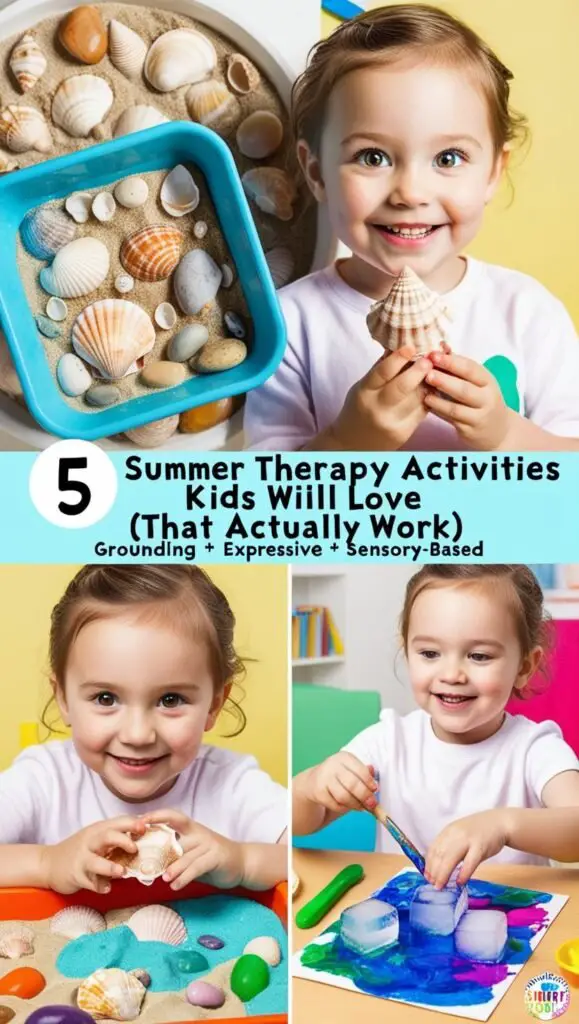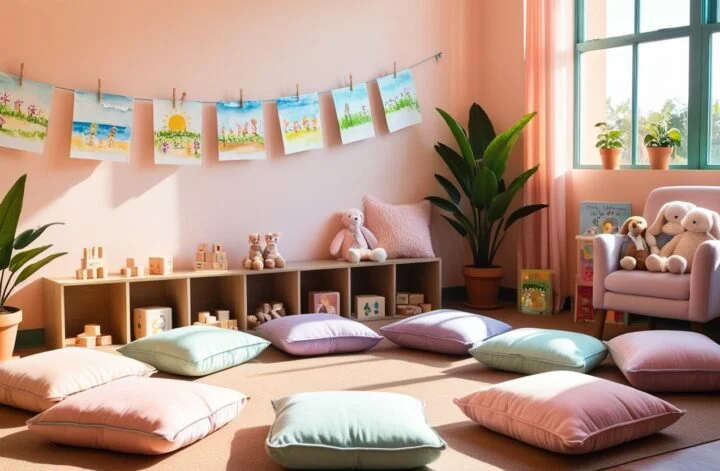Fun, Therapeutic Activities & Must-Have Supplies for Warmer Months
Sunshine, Play, and Healing: Why Summer Is the Perfect Time to Refresh Your Therapy Office
As the days grow longer and the sun begins to pour through your windows, there’s a gentle nudge in the air—a feeling that it’s time to shift gears. For therapists working with children, summer is more than just a season. It’s a powerful opportunity to infuse your space with light, energy, and sensory-friendly activities that meet kids exactly where they are: playful, curious, and in need of emotional expression.
In this article, we’ll explore how to transition your child therapy office for summer in a way that feels exciting, calming, and therapeutically meaningful. Whether you’re a counselor, psychologist, social worker, or psychotherapist, this guide offers creative ways to bring the season into your practice. From sunshine-themed sensory bins to summer-adapted art therapy tools, you’ll find easy-to-implement ideas that make therapy both fun and healing—without losing professional structure or intention.
Let’s help kids feel seen, safe, and free to be themselves—one summer-inspired detail at a time.
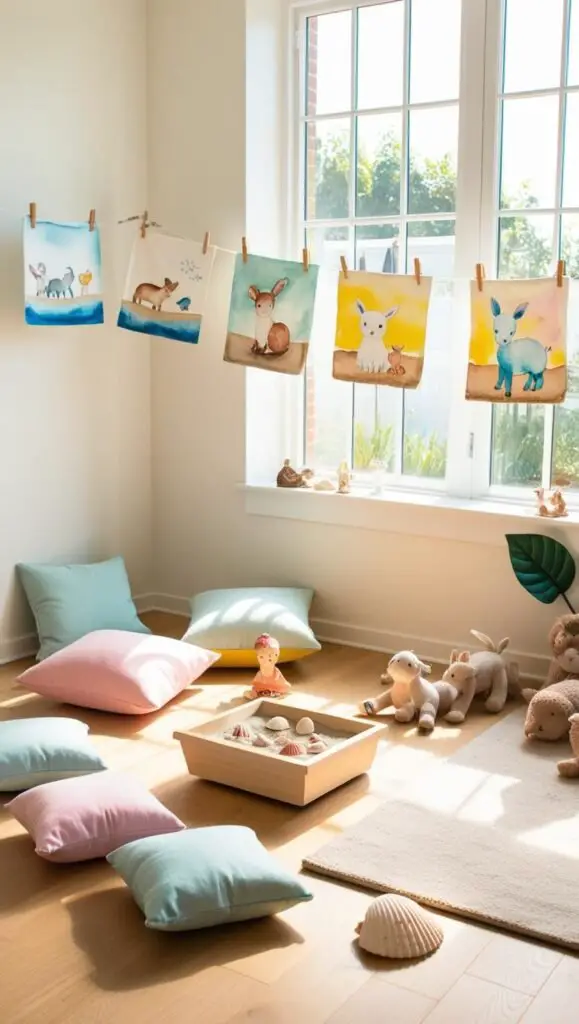
1. Summer Therapy Activities That Kids Love (and Therapists Approve)
Summer activities don’t have to mean breaking out the water balloons and turning your office into a splash zone. (Though hey, if you’ve got an outdoor space—go for it!) Instead, think in terms of seasonal adaptations of familiar therapeutic tools: art, movement, nature-based play, and sensory exploration.
Here are a few therapist-approved activity ideas perfect for summer months:
☀️ Sand Tray with a Summer Twist
Swap out traditional figurines with summer-themed miniatures—think seashells, tiny sunglasses, surfboards, and mini animals like crabs and dolphins. Use kinetic sand or moon sand for less mess, and let kids tell summer stories with their hands.
Therapeutic value:
Sand tray therapy supports nonverbal expression, which is especially helpful for children who struggle to articulate their feelings. Adding seasonal elements makes the experience feel fresh and exciting—drawing in their natural curiosity. The texture of kinetic sand offers a calming sensory experience, promoting grounding and regulation for anxious or overstimulated kids. Plus, storytelling with summer objects can help them explore themes of freedom, safety, and change.
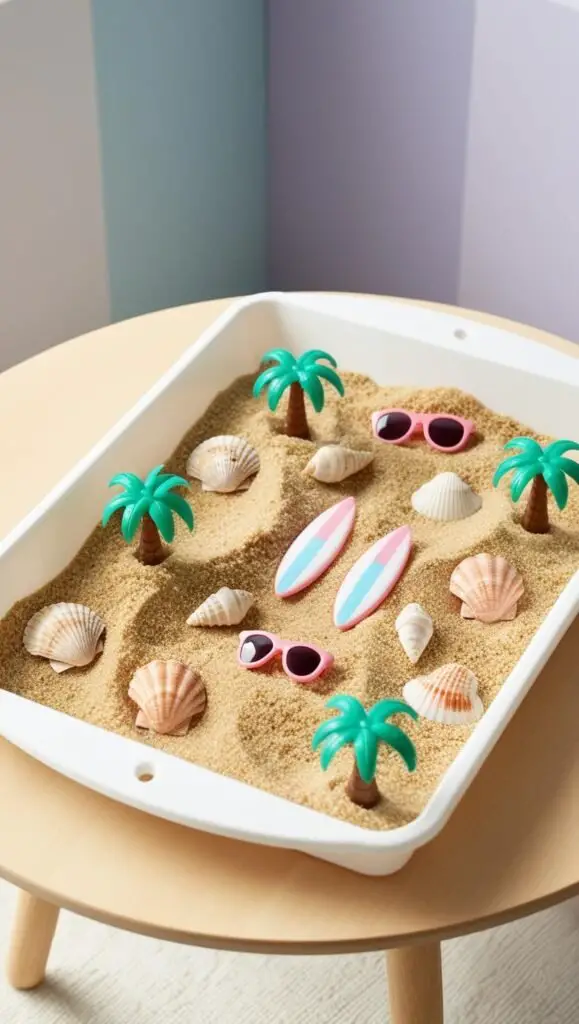
🌼 Summer Feelings Scavenger Hunt
Create a printable or reusable scavenger hunt with prompts like:
- Find something yellow that makes you feel happy.
- Find something soft that reminds you of safety.
- Find a sound that calms you like ocean waves.
You can do this indoors or in a courtyard/outdoor space if available.
Therapeutic value:
This activity builds emotional vocabulary and mindfulness in a playful way. By linking sensory input to feelings, children strengthen the mind-body connection and become more aware of how their environment affects their mood. It’s also a subtle way to practice emotional regulation by learning to notice and name experiences instead of reacting impulsively.
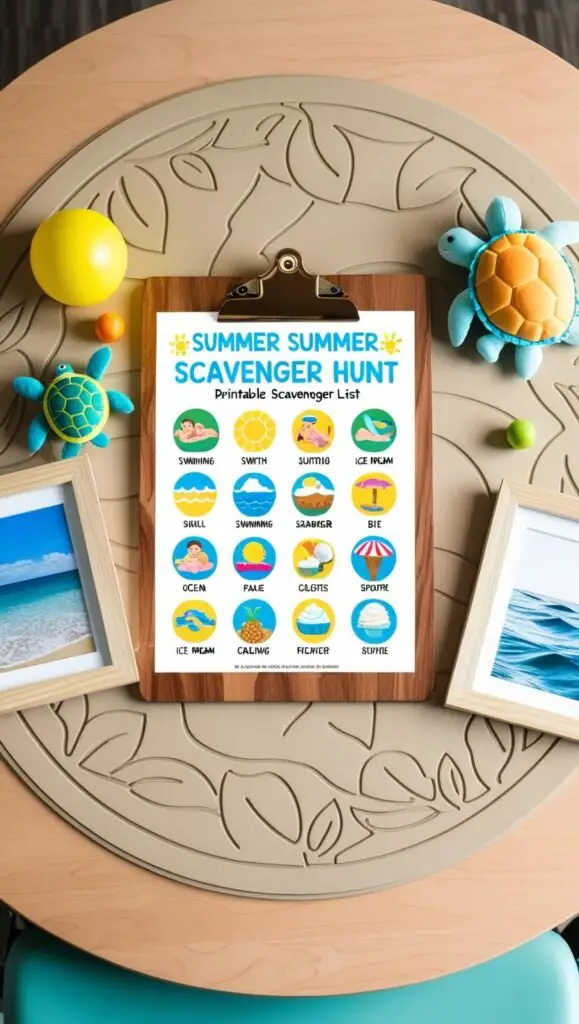
🍓 Nature-Based Craft Corner
Collect summer-themed natural elements (leaves, flowers, pebbles, twigs) and use them for collage art, nature mandalas, or “feelings gardens” with symbolic plant elements.
Therapeutic value:
Nature crafts offer a double dose of healing: the tactile benefits of creative work and the restorative impact of natural materials. Kids often find it easier to process difficult emotions when working with their hands. Making art from found objects also builds resilience and a sense of resourcefulness—important tools for emotional development.

🧺 Indoor Picnic Role Play
Set up a play picnic blanket with plastic food, stuffed animals, or dolls. Encourage the child to invite safe characters, talk about feelings, and create social interactions through role play.
Therapeutic value:
Role play allows children to experiment with new behaviors, rehearse real-life scenarios, and express feelings indirectly. A pretend picnic setting introduces themes of nurturing, connection, and safety in a cozy, low-pressure format. It’s especially helpful for kids with attachment trauma or social anxiety, as they can control the pace and content of the interaction.

🎨 Ice Cube Painting
Fill ice cube trays with water and a drop of washable paint or food coloring, freeze them with popsicle sticks, and let kids “paint” on thick paper. This is a great warm-weather sensory activity.
Therapeutic value:
Ice painting is fantastic for emotional regulation. It engages sensory pathways while also being inherently calming due to the cooling temperature and slow pace. The melting effect mirrors the therapeutic process—helping children witness change and impermanence in a visual and tactile way. Plus, it’s just so fun that even shy or resistant clients are likely to engage.
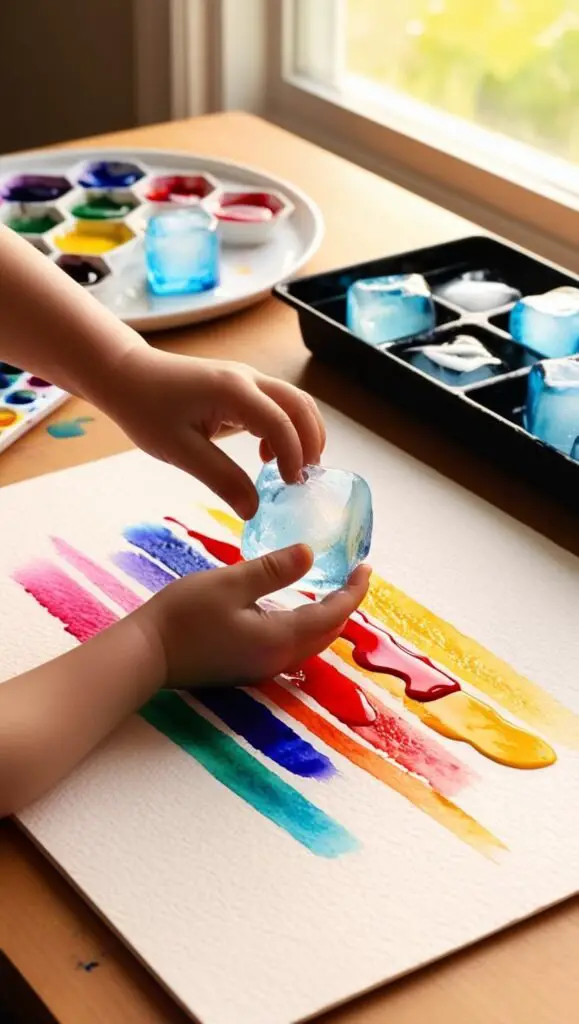
2. Summer-Ready Tools & Supplies for Your Therapy Office
Now that you have some seasonal activities in mind, let’s talk about what you’ll need to bring them to life. These supplies can be rotated or added to your existing toolkit to match the season while keeping things therapeutic and purposeful.
🌈 Must-Have Summer Therapy Supplies
- Kinetic sand or moon sand
- Summer-themed miniatures (available on Etsy or educational sites)
- Child-safe fans or cooling towels for sensory regulation
- Fresh floral stickers or nature-themed washi tape
- Washable watercolors and ice cube trays
- Fake grass mats or picnic blankets for play setups
- Clipboards with scavenger hunt prompts
- Scented sensory tools (lavender, citrus, mint)
Tip: Rotate these into a dedicated summer shelf or “Seasonal Station” in your office. Let kids help you set it up and choose what feels calming or fun—it builds buy-in and a sense of agency.
💼 Portable Options for Traveling Therapists
If you work in schools, homes, or multiple office settings, keep your summer tools in an easy-to-carry tote. Look for:
- Foldable pop-up sensory bins
- Laminated printables for scavenger hunts or emotion prompts
- A small portable fan for hot days
- Travel-size sand tray kits
- Clip-on parasols for outdoor sessions
3. Creating a Summer Atmosphere That Feels Safe
The goal isn’t just to decorate, but to create a regulating environment. Summer can be overstimulating for some kids—think heat, noise, and disrupted routines—so balance excitement with calming cues.
How to Do This:
- Use light, breezy fabrics or sheer curtains to soften lighting.
- Add cool-toned blues and greens to your decor for calming vibes.
- Use essential oil diffusers (lavender, orange, eucalyptus) or scent jars.
- Hang nature prints or child-drawn summer scenes on the walls.
- Keep a hydration station with kid-safe cups and a pitcher of cold water.
Creating these small sensory-based environmental changes helps children feel grounded, safe, and ready to engage—even on sticky, overstimulating summer days.
Let Summer Support the Work
Summer brings out joy, creativity, and restlessness—all at once. By tailoring your therapy office and session plans to meet the season, you not only increase engagement but also model flexibility, joy, and presence. Kids notice when things feel different and inviting, and they’re more likely to open up when therapy feels less clinical and more like play.
With the right tools, a few creative tweaks, and a mindful approach, summer can be one of the richest times for therapeutic growth.
